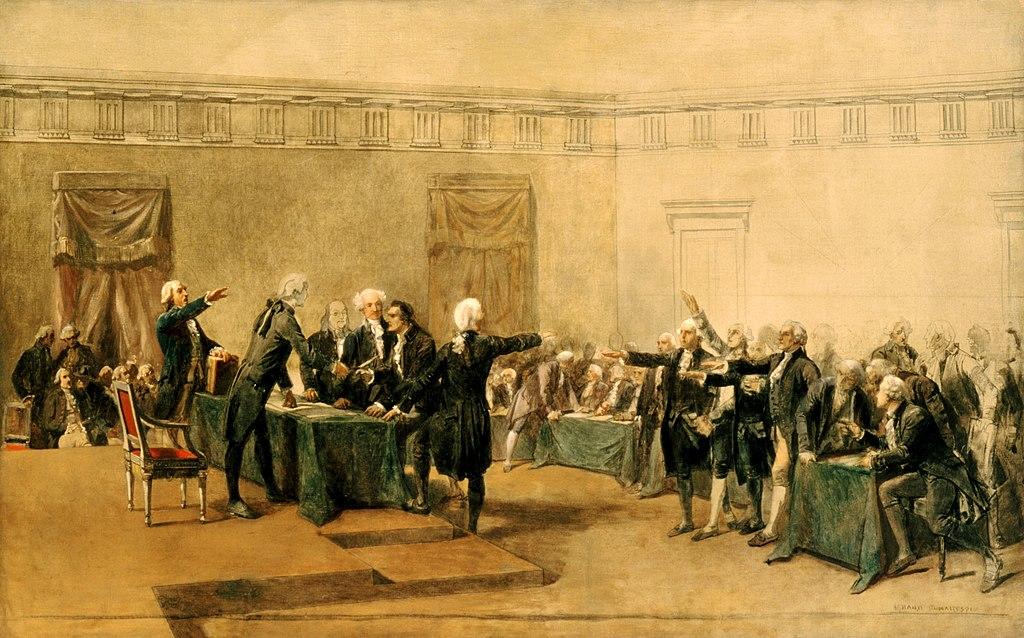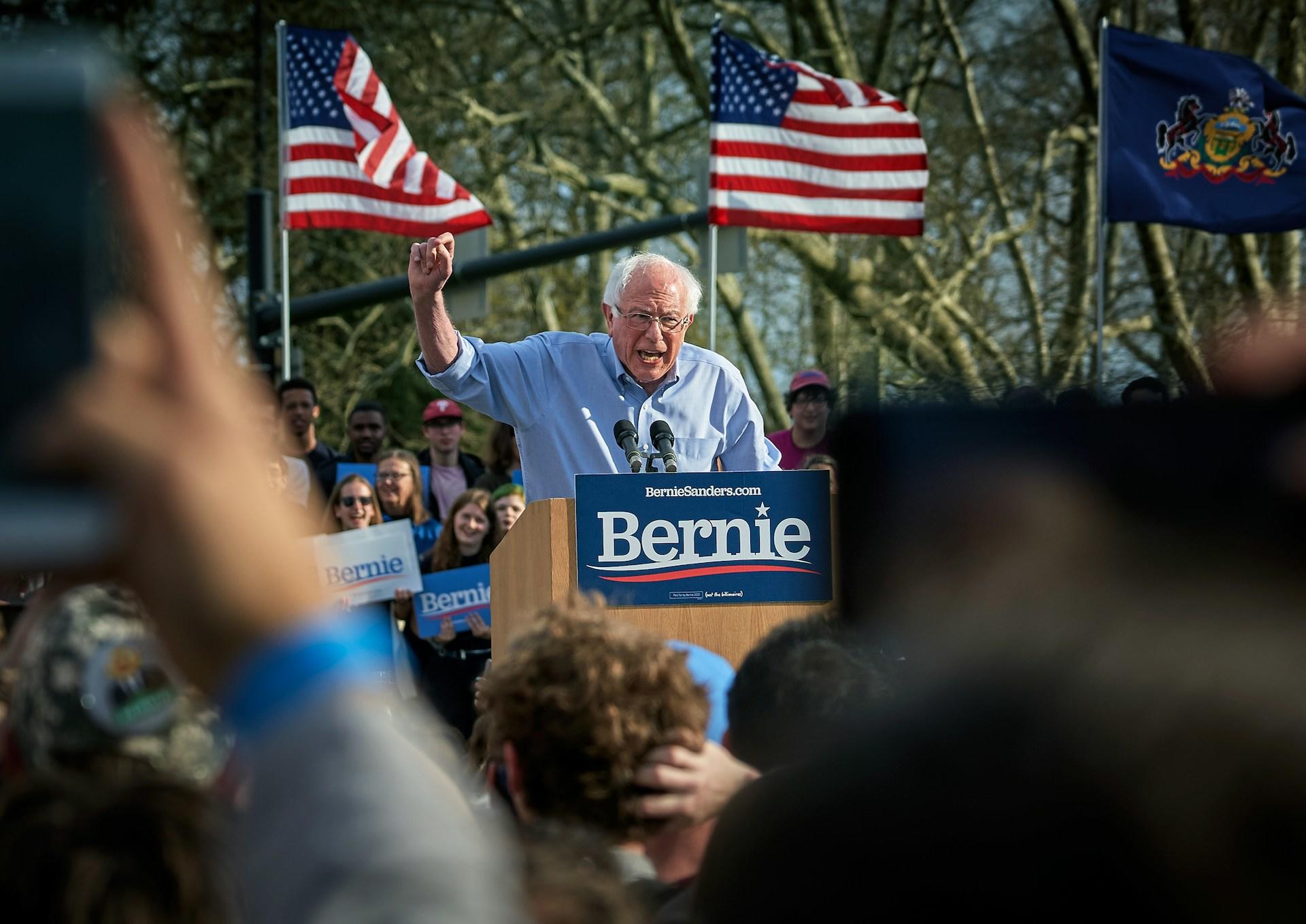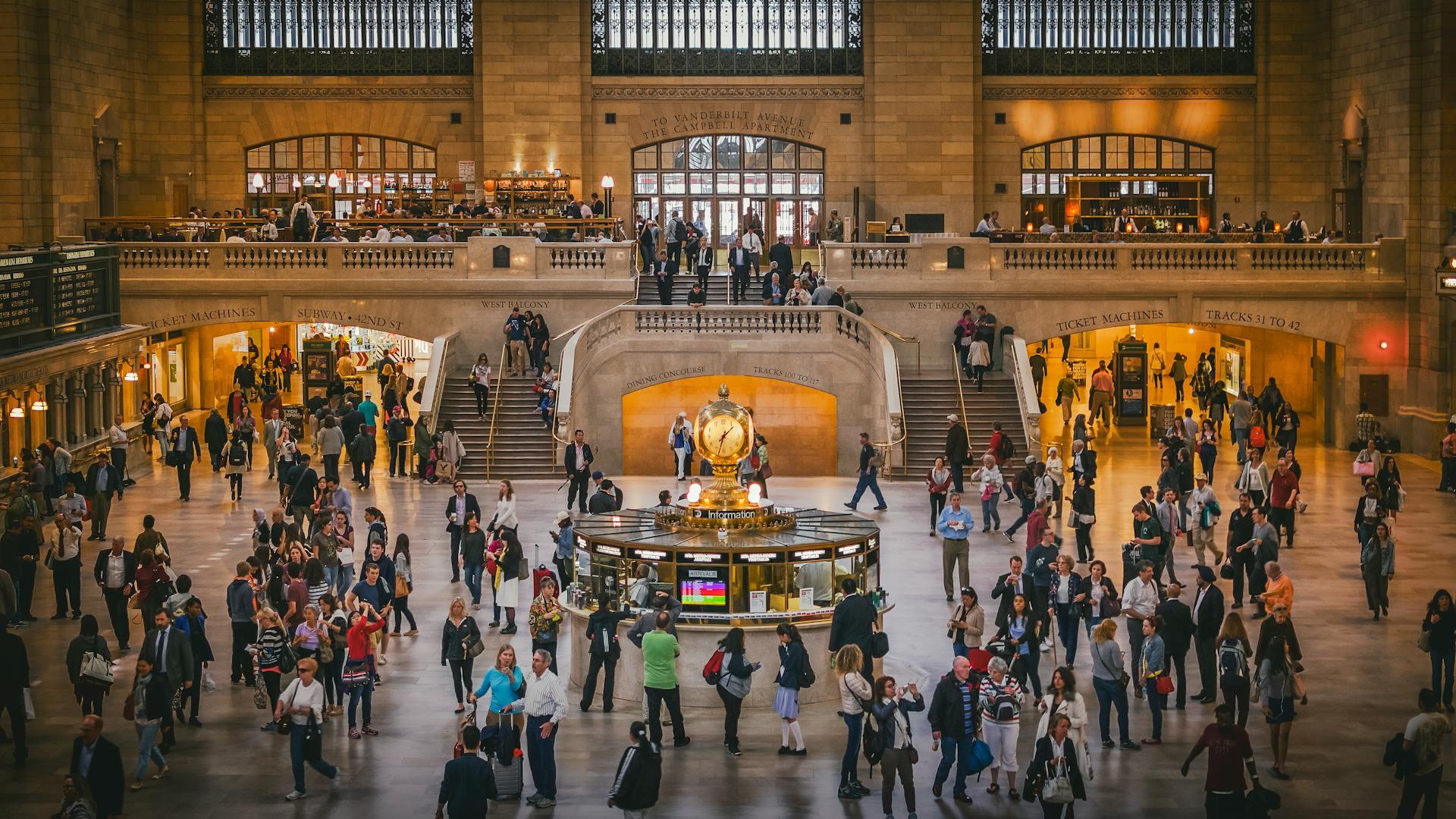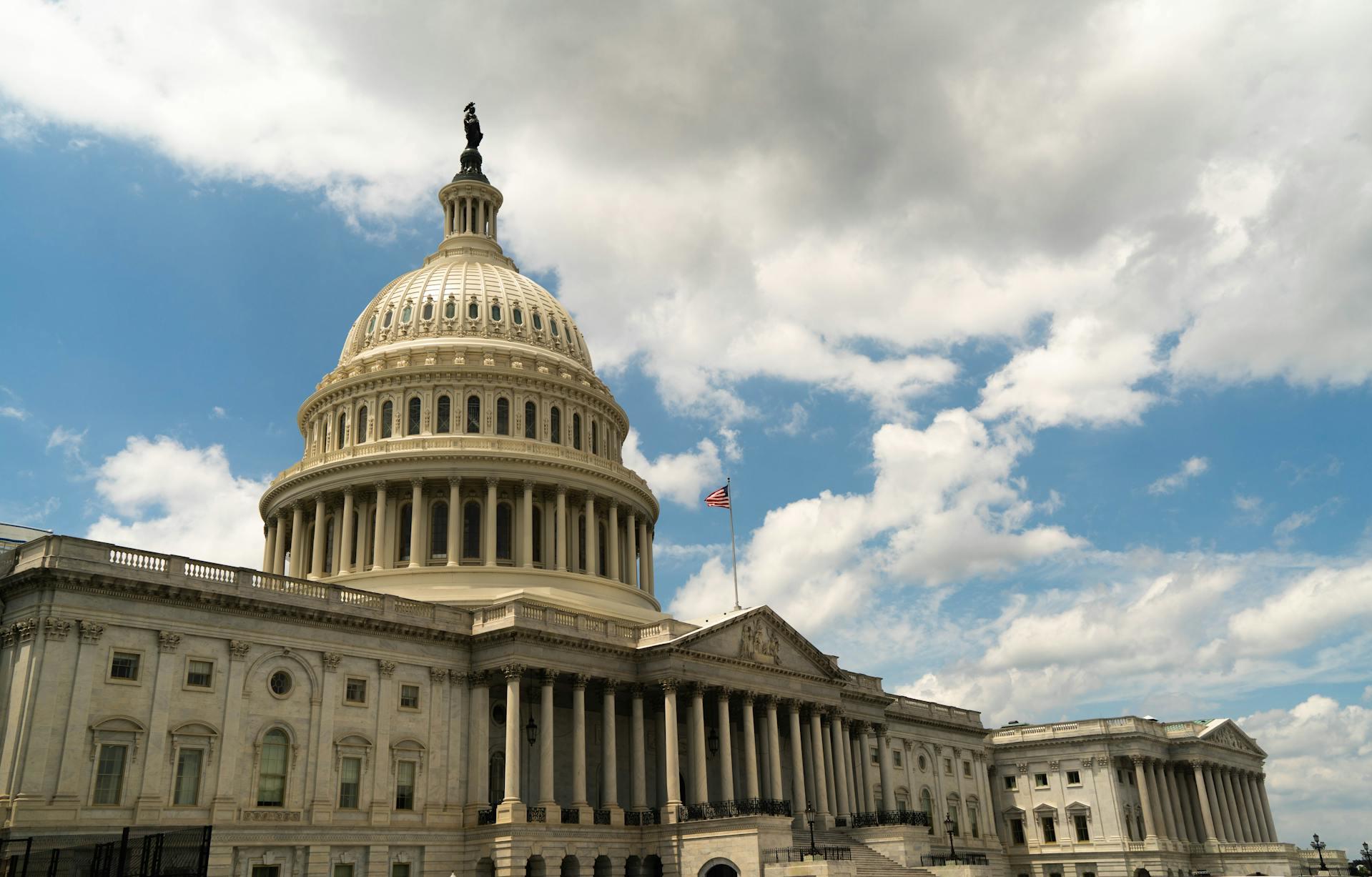The presidential election is one of the most significant events in American politics, gripping the attention of people worldwide every four years.
How did the election process come to be? Who can run for president? How does the election work? How can you vote in the presidential election?
Find out more about this imperative political process as we discover more about the American system of voting.

A Brief History of US Presidential Elections
After the colonies (which would become the United States) declared independence from Great Britain in 1776, the need for a national leader became clear. They wanted a totally different system than the one they had just broken free from.
The governing body since 1774 was called the Continental Congress and was responsible for leading the new country and establishing the rules.
It was made up of delegates from each of the colonies (except Georgia, which was fighting with Native Peoples), including some iconic people you have probably heard of before:
- George Washington
- John Adams
- Alexander Hamilton
- John Hancock
- Thomas Jefferson
- John Adams
In 1787, the Continental Congress got together at the Constitutional Convention. They drafted the U.S. Constitution, creating the office of the president and establishing the framework for presidential elections. The first election took place in 1789 with George Washington becoming the nation's first president, retiring the Continental Congress as the leading government.

Initially, the election process was simpler. Electors from each state voted for two candidates, with the person receiving the most votes becoming president and the runner-up becoming vice president. However, this system revealed its flaws in 1800, when Thomas Jefferson and Aaron Burr received an equal number of votes.
The matter was eventually settled in the House of Representatives, but to prevent this crisis from recurring, the 12th Amendment was implemented in 1804. It established separate votes for president and vice president in the Electoral College.
Citizens vote for the president, who is the head of state.
Over the years, several other constitutional amendments have changed the election process. Some key amendments include:
1870
15th Amendment
Prohibited denying the right to vote based on race, color, or previous servitude, extending suffrage to Black men.
1920
19th Amendment
Granted women the right to vote, further bringing suffrage to more Americans.
1951
22nd Amendment
Limited presidents to two terms in office, following Franklin D. Roosevelt's unprecedented four terms.
1961
23rd Amendment
Gave residents of Washington, D.C. the right to vote in presidential elections, providing representation to the nation's capital. Before this, D.C. did not have any representation in presidential elections.
1971
26th Amendment
Lowered the voting age from 21 to 18, allowing younger Americans to participate in elections.
These amendments reflect how social attitudes and voting necessities have changed over time.
Why Did the Continental Congress Choose an Electoral College vs Popular Vote?
When establishing the method for electing a president, some members of Congress wanted to utilize a popular vote method, but others wanted Congress members to be in charge of choosing the president. Eventually, Congress compromised and decided to proceed with an Electoral College method.
How Does a Popular Vote Work?
A popular vote counts every voter’s ballot and the winner is the candidate with the most individual votes wins.
How Does an Electoral College Work?
First, voters cast ballots for their preferred candidate. The candidate with the most popular votes according to a state’s specific rules wins by sending their slate of electors to an official vote. The electors are in charge of casting an official vote that aligns with their constituents’ decisions.
For the most part, Southern states favored using electors because combined with the Three-Fifths Compromise, they could increase their political power in government. The Southern states convinced Congress to count ⅗ of the enslaved population towards the total state population (even though they could not vote), inflating the Southern states’ numbers and securing more representatives in Congress than they would have otherwise had.
To get all the colonies to ratify the Constitution and become the United States, the Electoral College and the Three-Fifths Compromise were necessary.
With these provisions, the United States has functioned for over 200 years, building this list of US presidents:
| President | # | Term | President | # | Term |
|---|---|---|---|---|---|
| George Washington | 1 | 1789-1797 | Grover Cleveland | 24 | 1893-1897 |
| John Adams | 2 | 1797-1801 | William McKinley | 25 | 1897-1901 |
| Thomas Jefferson | 3 | 1801-1809 | Theodore Roosevelt | 26 | 1901-1909 |
| James Madison | 4 | 1809-1817 | William Howard Taft | 27 | 1909-1913 |
| James Monroe | 5 | 1817-1825 | Woodrow Wilson | 28 | 1913-1921 |
| John Quincy Adams | 6 | 1825-1829 | Warren G. Harding | 29 | 1921-1923 |
| Andrew Jackson | 7 | 1829-1837 | Calvin Coolidge | 30 | 1923-1929 |
| Martin Van Buren | 8 | 1837-1841 | Herbert Hoover | 31 | 1929-1933 |
| William Henry Harrison | 9 | 1841 | Franklin D. Roosevelt | 32 | 1933-1945 |
| John Tyler | 10 | 1841-1845 | Harry S. Truman | 33 | 1945-1953 |
| James K. Polk | 11 | 1845-1849 | Dwight D. Eisenhower | 34 | 1953-1961 |
| Zachary Taylor | 12 | 1849-1850 | John F. Kennedy | 35 | 1961-1963 |
| Millard Fillmore | 13 | 1850-1853 | Lyndon B. Johnson | 36 | 1963-1969 |
| Franklin Pierce | 14 | 1853-1857 | Richard M. Nixon | 37 | 1969-1974 |
| James Buchanan | 15 | 1857-1861 | Gerald R. Ford | 38 | 1974-1977 |
| Abraham Lincoln | 16 | 1861-1865 | Jimmy Carter | 39 | 1977-1981 |
| Andrew Johnson | 17 | 1865-1869 | Ronald Reagan | 40 | 1981-1989 |
| Ulysses S. Grant | 18 | 1869-1877 | George Bush | 41 | 1989-1993 |
| Rutherford B. Hayes | 19 | 1877-1881 | William J. Clinton | 42 | 1993-2001 |
| James A. Garfield | 20 | 1881 | George W. Bush | 43 | 2001-2009 |
| Chester A. Arthur | 21 | 1881-1885 | Barack Obama | 44 | 2009-2017 |
| Grover Cleveland | 22 | 1885-1889 | Donald J. Trump | 45 | 2017-2021 |
| Benjamin Harrison | 23 | 1889-1893 | Joseph R. Biden Jr. | 46 | 2021-present |
How the American Presidential Election Works
It’s easy to think that the majority of the presidential election process takes place on Election Day in November, but in reality, it takes a lot of time and energy in the political sphere to conduct these elections.
Candidates, Campaigns, Primaries, and Caucuses
At the beginning of an election cycle, which typically begins around January-March before the November election, people who want to put in a bid for president begin their months-long campaigns.
Each state has its own filing procedures, opening dates, and deadlines. Most states allow people to file for candidacy around February, but some allow the filing of declarations as early as November (a year in advance of the vote). Candidates must also register with the Federal Election Commission.
Preliminary campaigns and debates are held so voters can learn more about the candidates.
A primary election is a voting event held months before the November election. It allows voters in each state to declare which candidates they like most out of multiple options. The results inform the Democrat and Republican organizations which of their candidates they should choose as their nominee.
States hold primary elections or caucuses to allow the residents of the state to choose their favorite candidates out of a larger pool. At this point, there are typically at least two candidates vying for the nomination in their respective political parties. Third-party candidates may not need to register for candidacy as urgently because they do not operate in the same capacity as the Democratic and Republican parties.
State primary dates vary by state, but in general, they take place between January (starting with Iowa) to May, with many votes happening simultaneously on Super Tuesday (typically the first Tuesday in March).
The results of these primaries inform the Democratic National Convention (DNC) and the Republican National Convention (RNC) which of their candidates is most likely to go on to win the presidential election. Therefore, the candidate with the most support will likely be declared the official nominee and receive support from their party’s organization.
Delegates from each state representing the respective parties attend the DNC or RNC and vote for the candidate they want to be the official nominee, not unlike an Electoral College. They are expected to vote aligned with their constituents’ votes. The Conventions decide who will be running as President and Vice President.

The Campaign Trail & Debates
Once a candidate has been officially nominated by their political party, they must now spend a lot of time and money campaigning across the nation to persuade voters to vote for them.
Candidates hold rallies and meet with local governments to understand their constituents more. Political parties and nominees craft policies to propose to the public as their political platforms.
Candidates typically debate each other to compare and contrast their policy propositions, plans, personalities, and other aspects so voters can make an informed decision on Election Day.
Presidents can only be elected for two terms, for a total of 8 years in office.
General Election & Inauguration
In November, the culmination of months and years of planning is revealed as voters head to the ballot box once again for the general election.
The entire nation votes on Election Day (which is November 5th, 2024 for the current election cycle), save for early voters and mail-in voters. At the end of the day, each state must count and verify all the votes which gives the result of the popular vote.
The result of the popular vote informs states which Electoral College slates to task with submitting official ballots. The Electoral College consists of party-appointed people who vote on behalf of a congressional district in their state. They are expected to vote in alignment with their state voters’ decisions.
On election night, you’ll hear “270 to win” mentioned numerous times. This refers to the fact that a candidate must secure at least 270 electoral votes to secure the presidential nomination.
The final results will not be verified until January 6th, 2025 when the official Electoral Votes are counted by Congress. Only then will we officially know which candidate has won the presidency.
On January 20th, the winning candidate will be inaugurated into the White House.
A general election is an election that will result in a candidate securing an elected position. It most often refers to the Presidential Election in November because the results will directly affect which candidate wins the presidency.
Facts About the Presidency
Beyond the election process, there are other important facts to know about the position of President of the United States.
How Long is the Presidential Term?
Presidential terms are 4 years in length. They begin and end on January 20th after an election year.
When Are Presidential Election Years?
Election years are every 4 years. They happen to fall on Leap Years and also the years that hold the Summer Olympics.
What is a Lame Duck President?
A president is called a “lame duck” when they will not be serving another term and a successor has been declared, but the inauguration has not yet taken place. The current president is still technically in office, but they cannot effectively do anything.
The phrase “lame duck” originally came from finance and was first used to describe Calvin Coolidge in 1863 as a “broken-down politician.”

Who Can Run for President?
The path from regular citizen to President is full of hurdles, but in theory, anyone meeting the minimum requirements can bid for the position of Commander in Chief!
Note that the vast majority of candidates have at least some previous experience in politics, giving them credibility and practical knowledge of how the government works.
7 Steps to Become President
You can break down the process of becoming president into fewer or more steps than seven, but we will keep it simple by mentioning the most crucial steps.
Step One: Meet the Minimum Eligibility Requirements
The main boxes you must tick in order to qualify to run for president are:
- You must be a natural-born citizen and have the documents to prove it
- You must be at least 35 years old
- You must live in the United States for at least 14 consecutive years
Step Two: Declare Your Candidacy Federally
If you want to be a candidate for the Democratic or Republican parties, you will need to contact the official party organization.
If you want to run as a third party, especially as an independent or write-in candidate, you have more freedom to proceed as you wish.
You must register with the Federal Election Commission once you’ve spent $5,000 on your campaign.

Step Three: Declare Your Candidacy at the State Level
In order to appear on the ballot for the primary elections, you must register your candidacy in each state according to their specific registration guidelines.
If you are a third party or independent candidate, you do not have to register in time for the primaries because the primaries are really only for the big two political parties.
You will not appear on the November ballot for any state you have not registered in, and several states do not allow write-in candidates at all.
Step Four: Build Your Platform
Dedicate a lot of time and energy to building a comprehensive political plan. Most candidates will need a large team of collaborators to help with things like crafting policies, organizing press appearances, coordinating travel plans, creating campaign materials like TV commercials and online ads, and more.
You’ll need to declare your running mate and start deciding who your cabinet members would be if you won. Additionally, you would need to select your electoral slate for the general election.
You must be at least 35 years old to run for president. The average age of presidential candidates is 55.
Step Five: Gain Traction in Your Campaign (optional: Do Well at the Primaries and Become the Nominee)
If you are a Democrat or Republican candidate, you will need to secure the most votes possible in the primary elections so that you can secure the official nomination from your party.
Realistically, the only presidential candidates who have a hope of winning the election are the Republican and Democrat nominees; however, you can still run right up to the general election granted you have the correct registrations.
If you’re not part of the Big Two Parties, you will likely not have a chance to appear in something like a primary vote.
A candidate must secure a minimum of 270 electoral votes to win.
Step Six: Win 270 Electoral Votes in the General Election
At the General Election in November, you will need to secure millions of votes to win. Typically, but not always, the candidate who wins the popular vote in the nation will become the president-elect.
The Electoral College electors will cast their official ballots a few weeks after the general election. Once the electoral votes are counted, the winner will be officially announced. If your name comes up, you’re the next president!
Step Seven: Get Inaugurated
Complete the inauguration process and be sworn into the White House.

How Can You Vote in the Presidential Election?
Voting is one of the most basic things you can do to participate in politics as a citizen of the United States. Of all the types of elections, the presidential general election has the largest turnout, but remember that if you’re registered to vote, you can vote in your local and state elections, too!
Register to Vote
Check your voter registration status and see if you are already registered to vote. If you have a valid driver’s license, you may already be registered in your area.
If you are not registered to vote, check how to apply with your local town hall, election office, or DMV / RMV.
Check if, in your state, you must declare a political affiliation in order to vote in the primaries.
Who Is Allowed to Vote?
Generally, if you are 18 by election day, you are a US citizen, and you do not have a felony, you will be allowed to vote. Check with your local government if there is any question about your voting eligibility.
Get Informed
Research about the presidential candidates 2024 policies. Be sure to use a variety of sources including lots of independent news outlets to get the most unbiased information possible.
Prepare to watch the next presidential debate or find out more about what happened with recap videos and articles.
The first presidential debate between candidates Kamala Harris and Donald Trump took place on Tuesday, September 10th. It’s not yet clear if and when they will have another debate together. The debate between vice presidential candidates Tim Walz and JD Vance will take place on Tuesday, October 1st.
Get Out There!
Find out from your town’s website or town hall where your polling place is as well as what hours polling will take place. Election day in 2024 is Tuesday, November 5th.
You may be able to vote early or send a mail-in ballot if needed, but you will likely need to apply in advance to be able to do those things. Again, you’ll need to check with your local government to see what options are available since each state is different!
Now that you know more about how America votes and the American Presidential election process and how to be an active voter, you can get to the polls and participate directly in American politics!
References
- Continental Congress: First, Second & Definition. (2023). In HISTORY. https://www.history.com/topics/american-revolution/the-continental-congress
- Deadline to run for president, 2024. (n.d.). In Ballotpedia. https://ballotpedia.org/Deadline_to_run_for_president,_2024
- explainitychannel. (2020). US Presidential Election explained (explainity® explainer video). In YouTube. YouTube. https://youtu.be/Jdadb7qMBcE?si=GAPrMxpoRvEj7Cx5
- How to Run for President in 2024. (n.d.). https://www.sec.state.ma.us/divisions/elections/getting-on-the-ballot/how-to-run-for-president.htm
- kids.gov, usa.gov. "How to Become President of the United States" graphic (2016). https://pueblo.gpo.gov/Publications/pdfs/6099.pdf
- Overview of the presidential election process. (n.d.). In USAGov. https://www.usa.gov/presidential-election-process
- Presidential primaries and caucuses. (n.d.). In USAGov. https://www.usa.gov/primaries-caucuses
- The Difference Between a Primary and a Caucus, Explained. (n.d.). In Britannica. https://www.britannica.com/video/253537/primary-election-and-caucus
- The Electoral College. (n.d.). https://www.ncsl.org/elections-and-campaigns/the-electoral-college
- The Presidents Timeline. (n.d.). In WHHA (en-US). https://www.whitehousehistory.org/the-presidents-timeline
- United States presidential election of 1800. (n.d.). In Britannica. https://www.britannica.com/event/United-States-presidential-election-of-1800
- Voting rights laws and constitutional amendments. (n.d.). In USAGov. https://www.usa.gov/voting-rights
- What is the Electoral College? (2019). In National Archives. https://www.archives.gov/electoral-college/about















